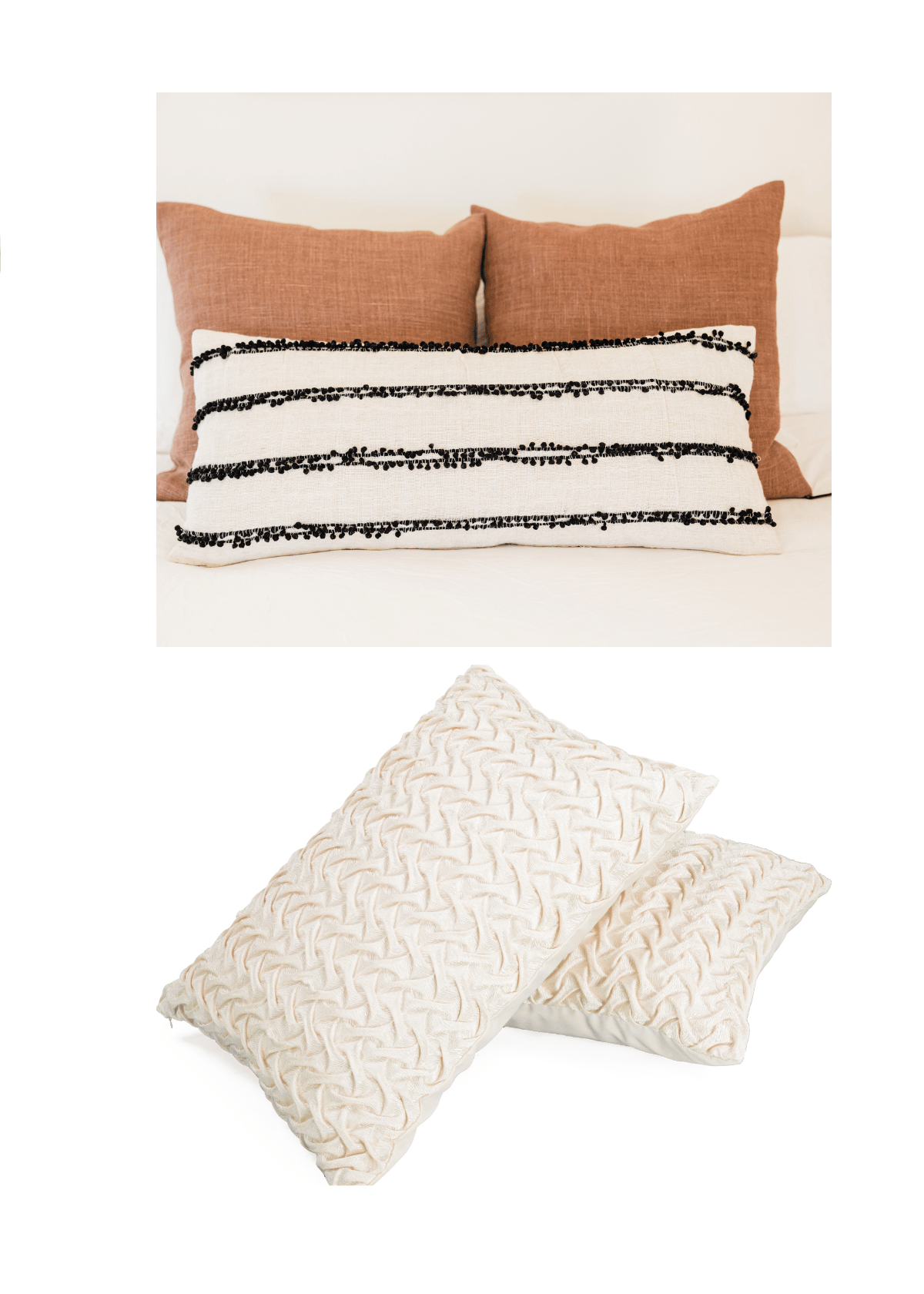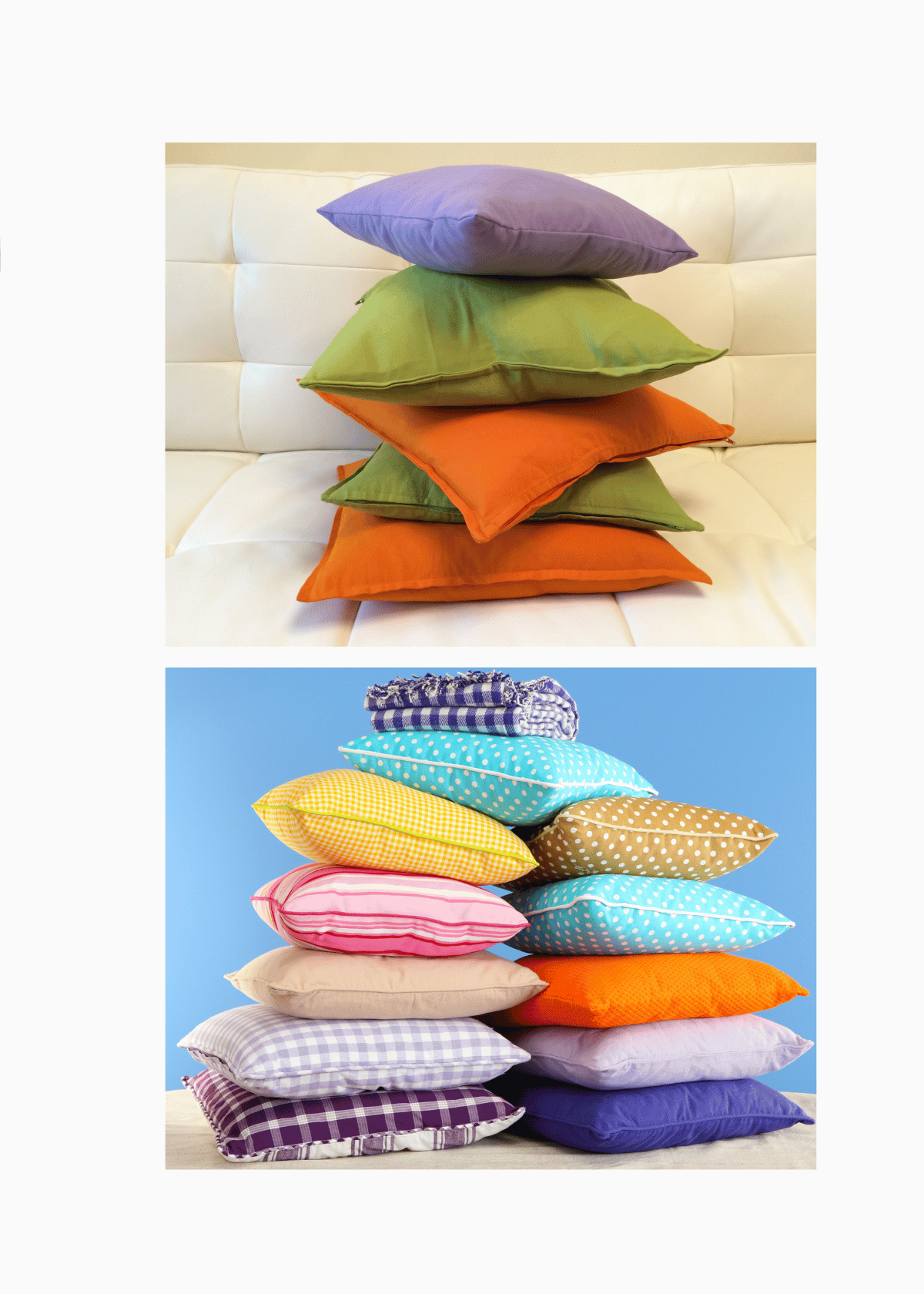(Last Update: 07/09/2025)
Have you ever wondered if you're cleaning your pillows the right way?
Keeping your pillows fresh and hygienic is not just a chore; it's crucial for a good night's sleep and overall health. Understanding the benefits of a clean pillow will motivate you to follow the best techniques for cleaning pillows perfectly.
In this detailed guide, I'll perfectly explain the best techniques for cleaning pillows. By the end, you'll have all the tips and tricks to ensure your pillows stay fresh, fluffy, and allergen-free.
Let's dive in and learn how to clean your pillow together!
Understanding Pillow Care
Mastering how to clean pillows thoroughly starts with understanding the materials. Begin by removing all the covers and checking labels on bed pillows or decorative pillows for specific care instructions.
- Did you know your pillow needs cleaning, too? Like your favorite hoodie, pillows collect dust mites, dead skin cells, and allergens. Yuck, right?
- These little buggers can make breathing hard and mess with your sleep. Cleaning your pillows occasionally (every 3-6 months) is a great way to keep them fresh and cozy.
- Think about it: you rest your head on your pillow every night. That’s a lot of time for gunk to build up! When you clean your pillow, you’re not just getting rid of dirt; you’re helping yourself sleep better and healthier.
- Imagine waking up feeling refreshed and without allergies because your pillow is squeaky clean.
- Cleaning pillows isn’t a daunting task. It’s like giving them a spa day! Some pillows can be machine-washed, and others need spot cleaning.
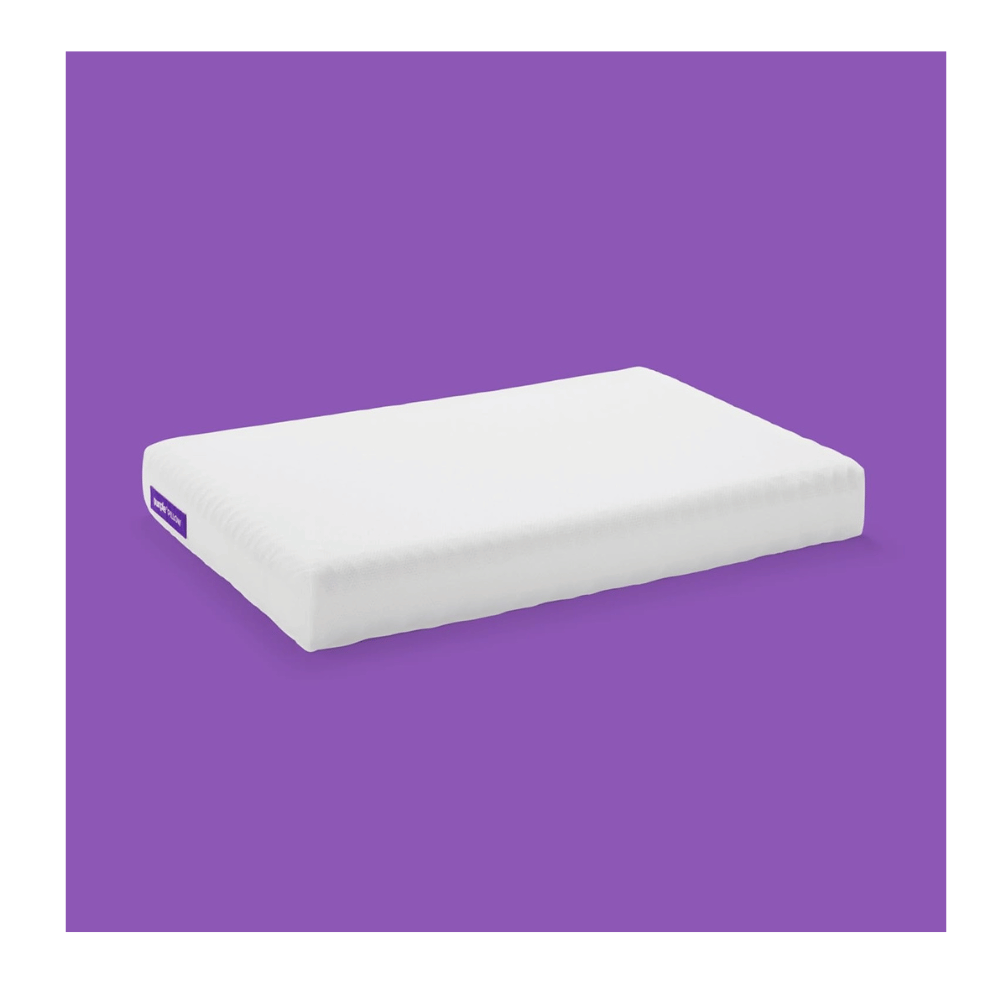
Preparing to Clean Your Pillow
- Check the care label: Always read the care label. It tells you how to wash your pillow correctly; some pillows have special instructions.
- Remove pillow covers: Remove the pillow covers and wash them separately. This prevents stains from setting in and makes the pillow last longer.
- Use pillow protectors: These protectors keep your pillow clean and help it last. They’re like a superhero cape for your pillow!
Always wash pillows using clean water and mild detergent. Avoid fabric softeners and rinse well to remove excess water, which can lead to mildew if left inside.
Basic Pillow Cleaning Techniques
- To protect pillows and extend their lifespan, follow basic cleaning instructions. Use a gentle detergent and machine wash on a delicate cycle with cool water.
FEATHER AND DOWN PILLOWS
- Feather and down pillows can feel luxurious, but they need extra care. Here’s how to keep them in top shape.
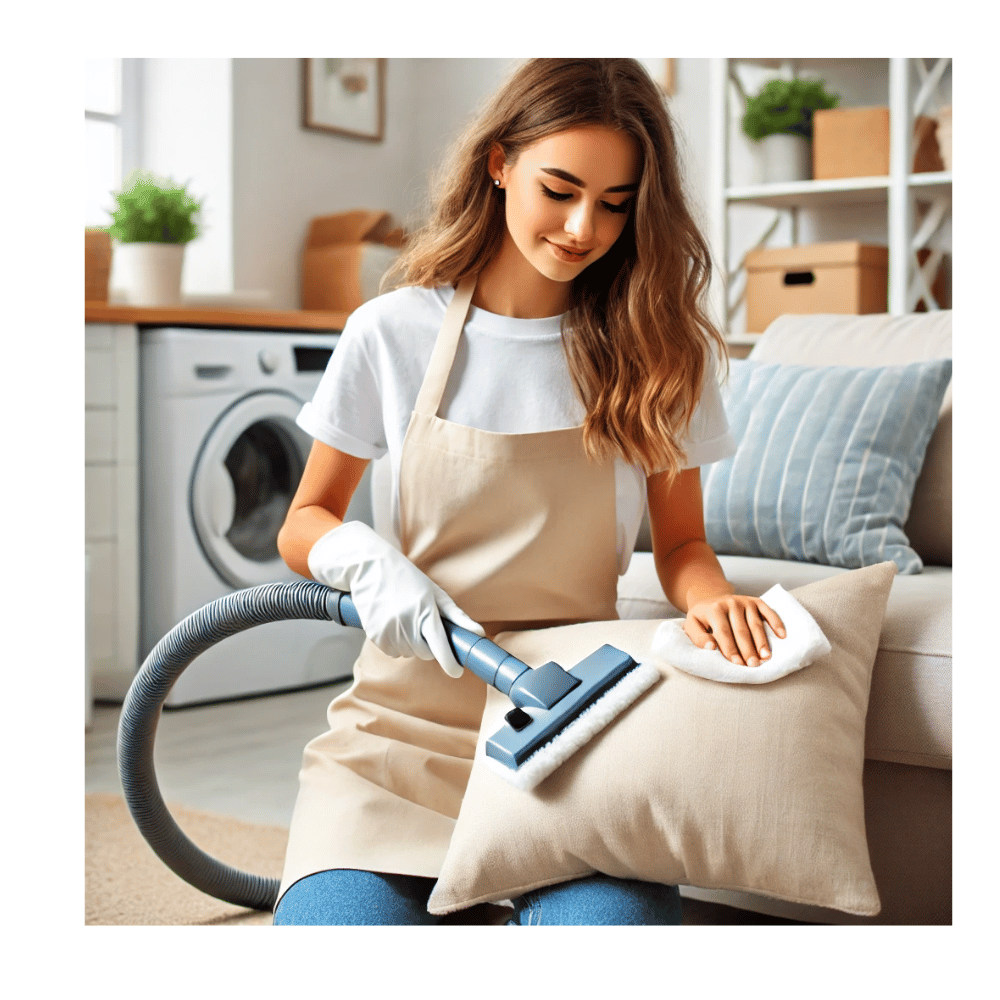
How to Clean a Feather Pillow?
Preparation and pre-treatment:
Start by checking the care label for any special instructions. Remove any pillow covers or protectors. If you notice stains, spot treat them with a mild detergent before washing.
WASHING INSTRUCTIONS:
Use a gentle cycle with warm water and a small amount of mild detergent to preserve the feathers. Wash two pillows at once to balance the machine and achieve an even clean.
Drying and maintenance tips:
Dry on low heat with a few tennis balls to help maintain loft. Ensure the pillows are thoroughly dry to prevent mildew. Fluff them daily to keep their shape.
Allow a few hours for proper drying. Use no heat settings or air dry flat to protect shape and fluff.
How to Clean a Down Pillow and Down Alternative Pillow?
Cleaning down pillows:
Use a front-loading washer on a gentle cycle with warm or cool water. Add mild detergent and avoid fabric softeners, which can damage the filling.
Caring for down alternative pillows:
These require similar care. Wash on a gentle cycle with warm water and mild detergent. Most down alternative pillows can tolerate higher spin speeds for better water removal.
DRYING TECHNIQUES FOR BOTH TYPES:
Tumble dry on low heat, adding dryer balls to reduce clumping. Always make sure pillows are fully dry before using to avoid moisture-related issues.

Memory Foam, Synthetic & Latex Pillows
- Memory foam, synthetic, and latex pillows require different care. These types typically cannot be machine washed. Instead, you can spot clean stains with a mild detergent and cool water.
- Pre-treat stains by applying a mild detergent or stain remover to affected areas before washing.
- Let the solution sit for 10–15 minutes to break down stubborn stains.
HOW TO CLEAN A MEMORY FOAM PILLOW?
Memory foam pillows are super comfy but need careful cleaning.
Spot cleaning methods:
- Memory foam pillows require special attention, especially when spot cleaning. You can use a mild detergent and a damp cloth, gently dabbing the stained area to remove the stain.
- Avoid soaking the pillow to prevent damage to the foam. This method helps keep your pillow fresh without compromising its comfort.
- Deep cleaning techniques:
- Fill a bathtub with lukewarm water and a small amount of detergent.
- Submerge the pillow and gently squeeze the water through.
- Rinse thoroughly to remove soap.

HOW TO CARE FOR SHREDDED FOAM PILLOWS
Washing Shredded Foam Pillows:
Spot clean with mild detergent and hand wash using lukewarm water when needed. Always air dry thoroughly and fluff occasionally to maintain shape.
Maintaining Shredded Foam Pillows:
Fluff shredded foam pillows daily and air them out regularly. Use a protective cover and avoid exposing them to direct sunlight.
CLEANING SYNTHETIC PILLOWS
Machine washing instructions:
Synthetic pillows are easy to clean. Use warm water, mild detergent, and a gentle cycle. Wash two at once to balance the load.
Hand washing techniques:
Soak pillows in warm soapy water, gently squeeze, and rinse well. This method helps maintain softness without damaging the fill.
Drying synthetic pillows with dryer balls:
Tumble dry on low heat with dryer balls to keep them fluffy. Make sure the pillows are fully dry to prevent mold.
CLEANING LATEX PILLOWS
Spot Cleaning Methods:
Dab the surface with a cloth and mild detergent. Never soak latex pillows to avoid damaging the material.
Deep Cleaning Techniques:
For occasional deep cleaning, gently submerge the pillow in lukewarm water with detergent. Squeeze lightly and rinse to clean without harming structure.
DRYING LATEX PILLOWS:
Air dry on a flat surface, flipping occasionally. Keep away from sunlight. For tough stains, dry cleaning is an option—follow label instructions carefully.
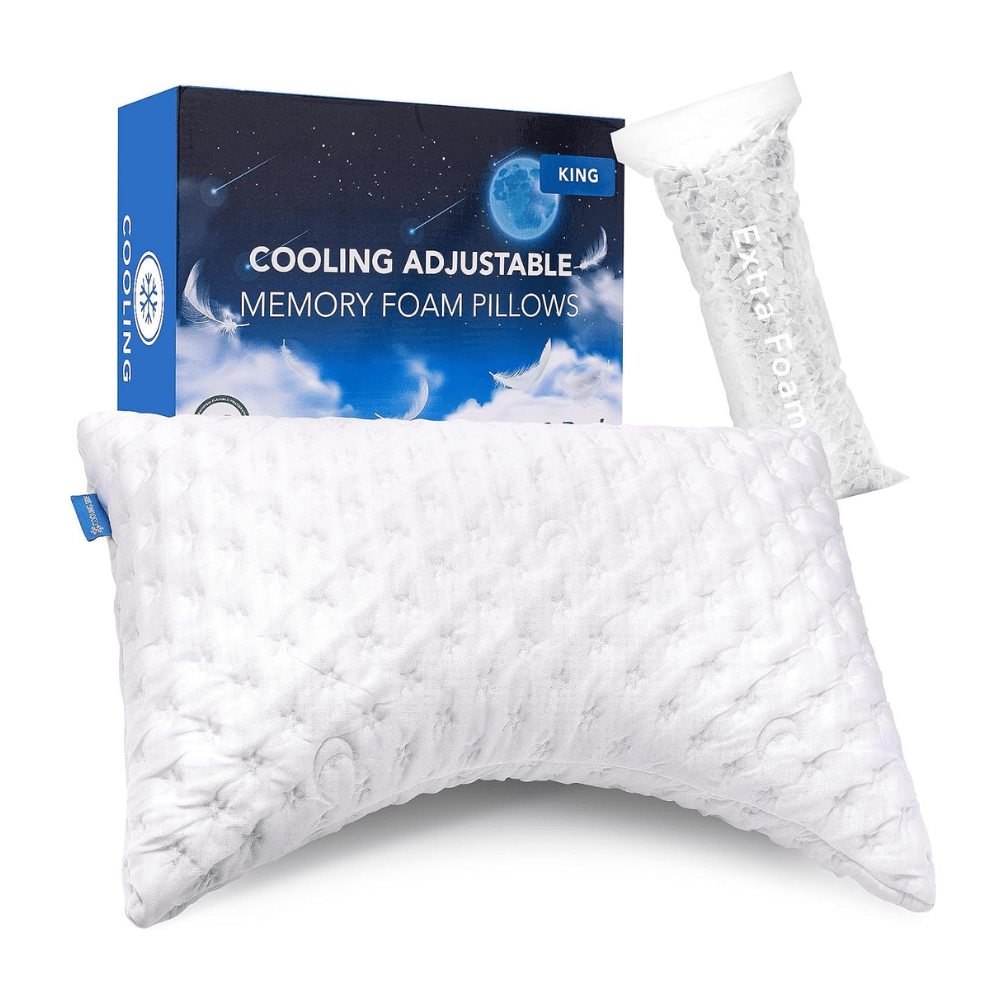
Specialized Pillow Care
- Specialized pillows need specific care to kill dust mites and eliminate odors. For machine-washable pillows, use high temperatures if recommended by the manufacturer.
Specialty Pillows
Specialty pillows like gel-infused, cooling, and orthopedic pillows need extra care.
CLEANING SPECIALTY PILLOWS
- Gel-Infused Pillows:
- Spot clean with a mild detergent.
- Avoid soaking to protect the gel inside.
- Cooling Pillows:
- Use a damp cloth for cleaning.
- Dry thoroughly to maintain the cooling effect.
- Orthopedic Pillows:
- Spot clean using a mild soap.
- Keep away from direct sunlight while drying.
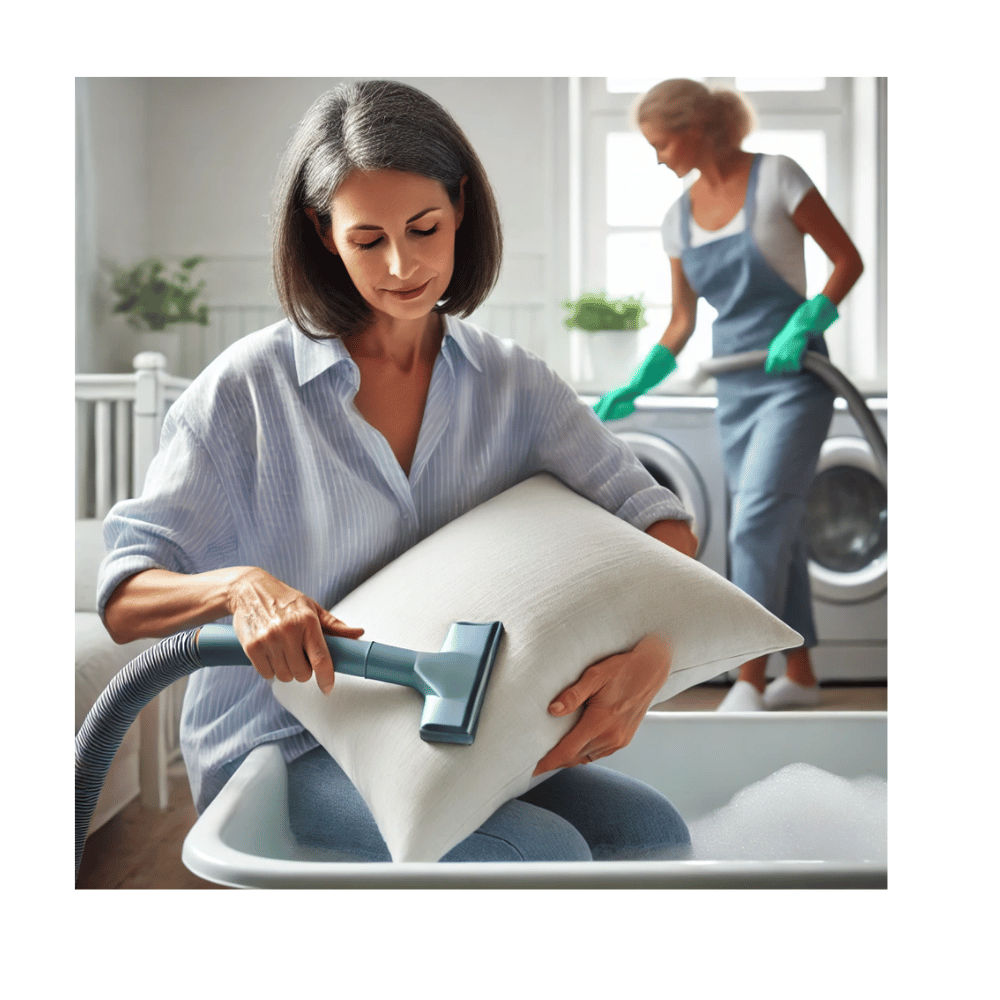
How to Clean a Bamboo Pillow?
Bamboo pillows are breathable and supportive but require gentle care to last.
Spot Cleaning Techniques:
Mix water with mild detergent and gently dab stained areas. Avoid soaking to protect the inner foam.
Washing Instructions:
Remove and machine wash the cover separately. If needed, hand wash the inner pillow in lukewarm water.
Drying and Care Tips:
Air dry both parts separately and avoid direct sunlight, which can damage the bamboo material.
HOW TO CLEAN A BODY PILLOW?
Body pillows offer full-body support but can be challenging to clean due to their size.
Preparation and Pre-treatment:
Remove covers and check the care label. Spot-treat stains with a mild detergent before washing.
Washing Instructions:
Use a large washer with warm water on a gentle cycle. Full cleaning and drying may take several hours.
Drying and Storage Tips:
Tumble dry on low heat or air dry. Store in a cool, dry place to prevent odor and moisture buildup.
You can treat most pillows the same way, just by paying attention to fabric type and drying technique.

Stain and Odor Removal
Nobody wants a stained or smelly pillow. With the right techniques, you can restore freshness and cleanliness easily.
REMOVING STAINS FROM PILLOWS
Common stains and solutions:
Use dish soap and water for food stains, and hydrogen peroxide for blood stains.
Using Natural Cleaners:
Vinegar and baking soda are effective for tough stains and are safe on most pillow types.
Using Commercial Cleaners:
Opt for a mild, pillow-safe cleaner when natural options aren’t enough.
ODOR REMOVAL TECHNIQUES
Using Baking Soda:
Sprinkle baking soda on the pillow and vacuum after 30 minutes for odor removal.
Vinegar Solutions:
Mix equal parts vinegar and water, and mist lightly on the pillow’s surface.
Essential Oils:
Add a few drops of essential oil to a spray bottle with water and mist for a clean, fresh scent.
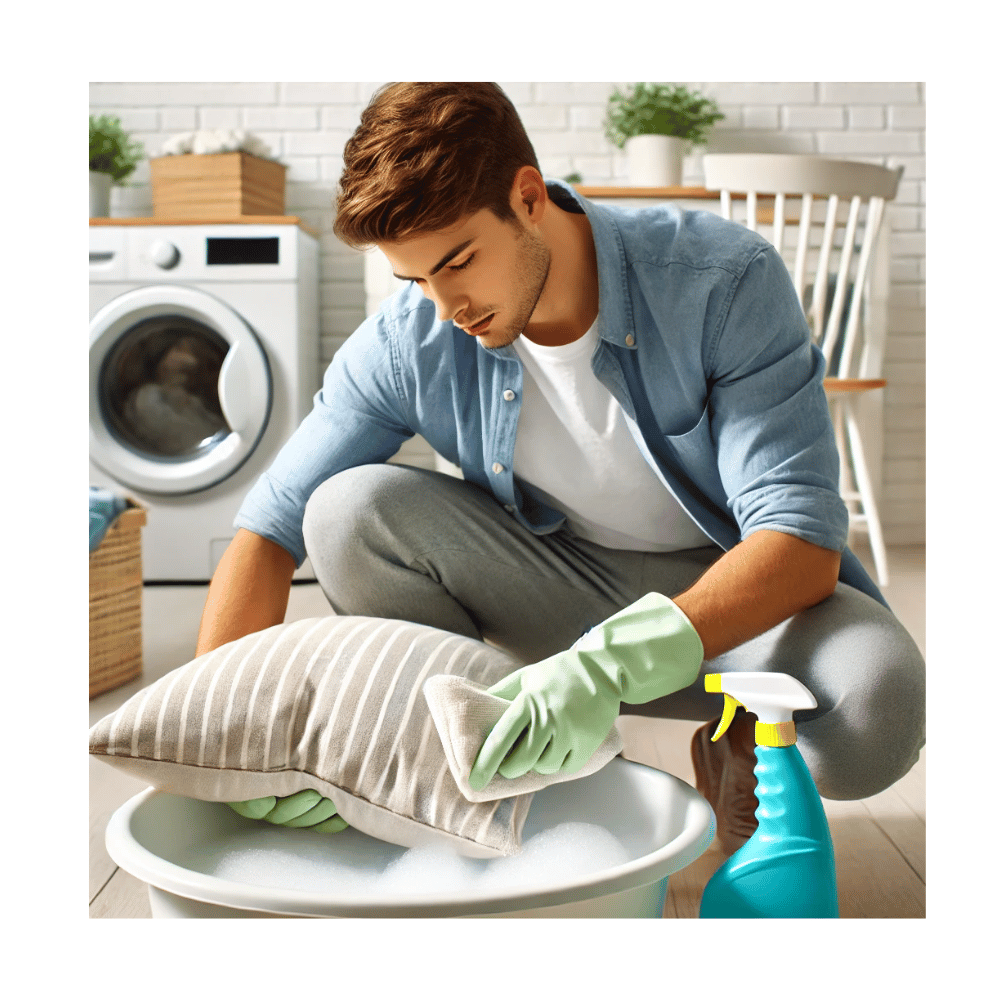
Maintenance and Care
Proper pillow care extends its life and keeps your sleep fresh and healthy. Always use a pillow cover and wash it regularly.
Maintaining pillow freshness:
Air your pillows out monthly to release moisture and odors. Use protective covers to block dust and increase longevity.
- Air out pillows once a month
- Use pillow protectors to prevent buildup
- Clean pillows seasonally for long-term care
Drying techniques:
Pillows should be completely dry to prevent mildew. Use low heat or sunlight to dry safely.
- Lay flat in sunlight, flipping occasionally
- Machine dry with tennis balls on low heat
- Never store damp pillows
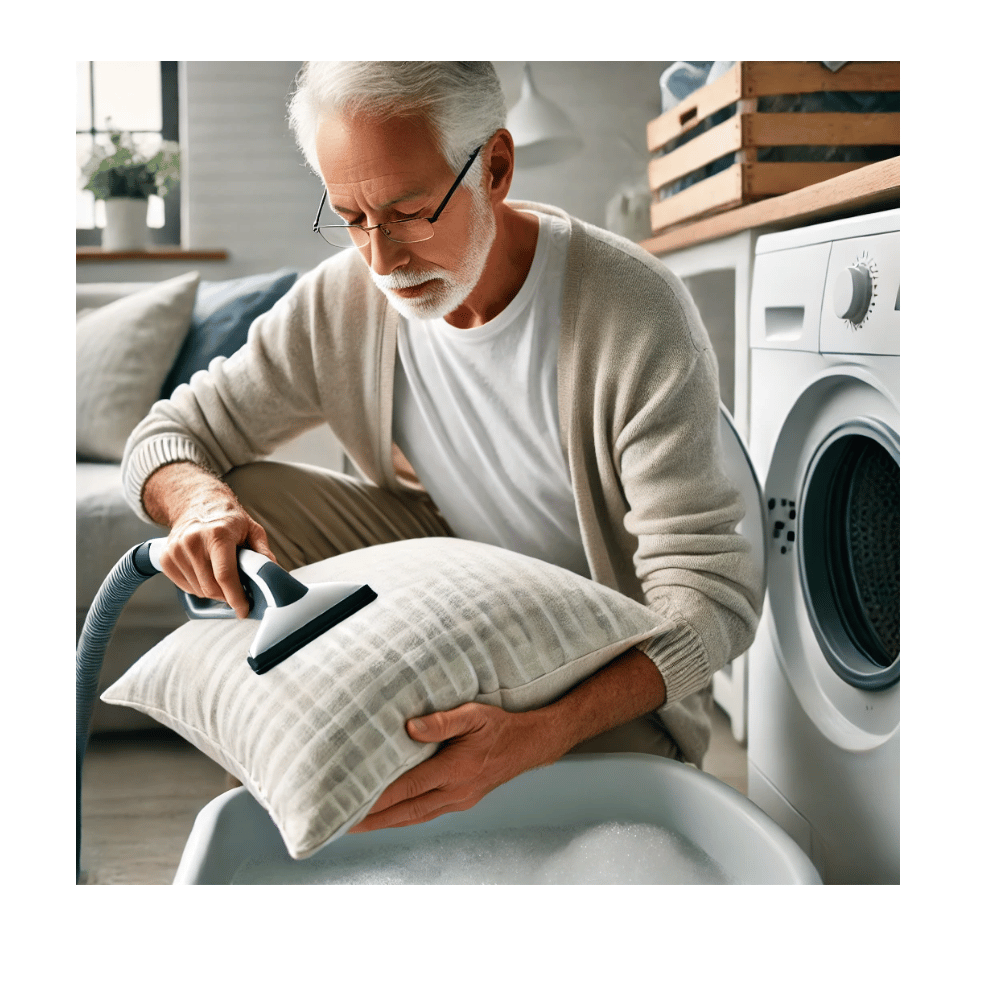
Replacement and Eco-Friendly Options
Knowing when to replace your pillows and using eco-friendly cleaning options can improve your sleep quality.
- When to Replace Your Pillow:
- Signs of Wear and Tear: If your pillow is lumpy, flat, or stained, it’s time for a new one.
- Lifespan of Different Pillow Types: Most pillows last about 1-2 years. Memory foam and latex pillows may last up to 3 years.
- Benefits of Regular Replacement: A new pillow means better support and a cleaner sleep environment.
- Eco-Friendly Pillow Cleaning Options:
- Using Organic Cleaners: Look for natural cleaning products that are gentle on your pillows and the environment.
- DIY Cleaning Solutions: Make your cleaning solutions with vinegar and baking soda.
- Benefits of Eco-Friendly Products: These products are safer for you and the planet and are often gentler on your pillows.
- Professional Cleaning Services:
- When to Consider Professional Help: If your pillows are heavily soiled or delicate, it might be worth cleaning them professionally.
- Choosing the Right Service: Look for a reputable service that specializes in pillow cleaning.
Special Considerations and Tips
From dealing with allergies to keeping your pet’s pillow fresh, I’ve got you covered.
Allergy and Myth-Busting
Keeping your pillows clean is crucial if you or your family suffer from allergies. Here’s how you can make it easier:
- Hypoallergenic pillow options: Choose pillows labeled hypoallergenic. They’re designed to keep allergens at bay.
- Cleaning tips for allergy sufferers: Wash pillow covers weekly in hot water. It helps remove dust mites and allergens.
- Preventing dust mite infestations: Use dust mite covers on your pillows. These covers prevent mites from settling in.
For delicate pillow cases or inserts, dry cleaners may be the best option, especially when labels advise against machine washing or drying.
Conclusion
Mastering the best pillow cleaning techniques perfectly ensures a healthier and more comfortable sleeping environment.
Consider incorporating these cleaning methods into your routine to maintain the freshness and longevity of your pillows.
Remember, a clean pillow promotes better sleep and enhances your overall well-being.
With these valuable tips, you can confidently keep your pillows in the best shape. Happy cleaning!
FAQs
Is it safe to wash pillows in the washing machine?
Yes, many pillows can be safely washed in the washing machine. Please check the care label first to ensure you follow the recommended instructions. Use a gentle cycle with mild detergent with cold water to avoid damaging the pillow's fabric and filling.
What do you think the best way is to clean pillows?
The proper way to clean pillows depends on their type. Use a gentle cycle with cold water and mild detergent for machine-washable pillows. For foam pillows, hand-wash with mild detergent and cold water. Always dry pillows properly and thoroughly to prevent mold and mildew growth.
How do you clean old, dirty pillows?
To clean old, dirty pillows, check the care label first. Use a gentle cycle with cold water and mild detergent—hand-wash foam pillows for machine-washable pillows. For stubborn stains and odors, use baking soda to absorb smells and spot clean with mild detergent.
Should you wash the inside of a pillow?
Yes, washing the inside of a pillow periodically removes dust mites, dead skin cells, and allergens. Follow the care instructions specific to your pillow type to avoid damage. Ensure complete drying to prevent mold and mildew, keeping your pillow fresh and clean.

